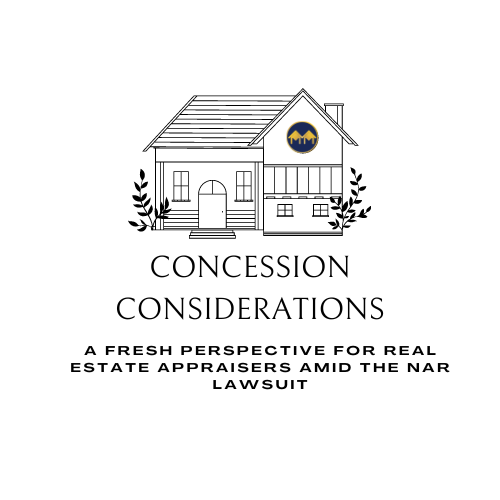The real estate appraisal industry, much like the rest of the world, is in a constant state of evolution. One of the less discussed, yet crucially important, aspects of this change pertains to the language of appraisal reporting. It’s essential for appraisers to refine their reporting language to meet the ever-stringent standards of objectivity and non-bias.
The language used in appraisal reports is a reflection of the appraiser’s knowledge, experience and professionalism. It’s also an important tool for communicating with clients, lenders and other stakeholders. As such, it’s important to understand how the language of appraisal reports has evolved over time and what appraisers can do to ensure they’re using the most current terminology.
The Historical Context of Evolving Terminology
Let’s consider a historical parallel to illuminate the importance of language adaptation; the giraffe, once known as the “camelopard” until well into the late 19th century, due to the confusion of its appearance. Similarly, outdated terms such as referencing one’s “Rolodex” have shifted in favor of modern alternatives like “contact list” or “digital address book.” These examples underscore the fluid nature of language and its impact on our perceptions.
For real estate appraisers, modernization isn’t just about staying current; it’s about aligning with heightened standards for clarity and fairness in reporting. The latest from Freddie Mac stresses the exclusion of any language of appraisal reporting that could be perceived as prohibited, subjective, or potentially biased.
The Personal Pride and Challenge of Change
Indeed, appraisers take great pride in their work, and suggestions to alter the wording can feel like a personal attack. Such a reaction is natural. However, addressing this can allow us to rise above our defensive instincts and engage with the feedback positively.
The appraiser should be encouraged to view the feedback as an opportunity for growth and improvement. This is not a criticism of their work, but rather a suggestion that they can do better. The goal is not to erode the value of an appraiser’s expert conclusion but to express those conclusions in an empirically sound and universally acceptable manner.
Practical Steps for Language Compliance in Appraisal Reports
A common pitfall in appraisal language arises from subjective terms like “desirable” when referring to a neighborhood instead of presenting objective metrics such as average days on market (DOM). The charge here is to shift from opinion-based to fact-based reporting, a pretty straightforward strategy in theory, but one requiring a deliberate approach in practice.
Consider Replacing With Fact-Based Alternatives
Below are examples of outdated phrases along with their recommended replacements that convey a clear, objective meaning without altering the report’s substance:
- Instead of “Desirable/undesirable neighborhood, prestigious,” say “Homes in the XXX neighborhood experience an average of XXX days on market, while the overall average DOM for the market is XXX.”
- Replace “Granny Flat, Mother-In-Law Quarters” with “Accessory Dwelling Unit.”
- Swap “Convenient to shopping areas” for “Within 10 blocks of shopping areas.”
- Use “Conforms to current market trends” in place of “Traditional.”
- Choose “Primary bedroom, ensuite” over “Master Bedroom.”
- Instead of “Gentrified,” describe “Renovated homes are present nearby.”
- Replace “Nuisance” with “External obsolescence.”
- Show actual decreasing or increasing sales prices, days on market, etc., possibly utilizing graphs or visual aids, rather than vague terms like “Strong market, weak market.”
- Specify “Public transportation is XXX (yards, miles) away” instead of the ambiguous “Walking distance.”
- Opt for “Schools, parks, etc. are within XXX miles/blocks” over the subjective “Family-friendly.”
- Discuss conformity/variance of neighborhood from overall market averages rather than using terms such as “Pride of ownership, Well-kept.”
The Emotion Behind Necessary Change
While adopting new terminology can spark heated debates among seasoned professionals, it’s essential to view these adjustments not as critiques but as enhancements that align with industry best practices. By doing so, we are not only upholding our professional integrity but also protecting ourselves from the discomfort and potential legal consequences of being misunderstood or misinterpreted.
The Ongoing Education and Proactive Adaptation
As we continue to evolve as an industry, it’s important that we remain open-minded and willing to learn from one another. By doing so, we can ensure that our clients receive the best possible service while also protecting ourselves from potential liabilities.
The best way to do this is by staying up-to-date on the latest industry trends and best practices. This can be done through continuing education courses, attending industry conferences and seminars, reading trade publications and blogs, and participating in online forums.
Final Reflections
In our continuous effort to produce credible and compliant appraisal reports, we must embrace the use of fact-based, neutral language that accurately conveys our expert analysis without giving way to misinterpretation or bias. Our duty as appraisers is to transcend personal preference and embrace words and phrases. That uphold the highest professional, ethical standards and language of appraisal reporting.
Remember, evolving our language is not about diluting our conclusions but about enhancing their clarity and comprehensibility. If there are ways to present our findings more inclusively and accurately, why wouldn’t we seize that opportunity? It is not just in our best interest but also that of the communities and markets we serve.
Related Blog Posts
Join Over 100,000 Students Enjoying Manfred School Now
Become Part of Manfred School to Further Your Career.





